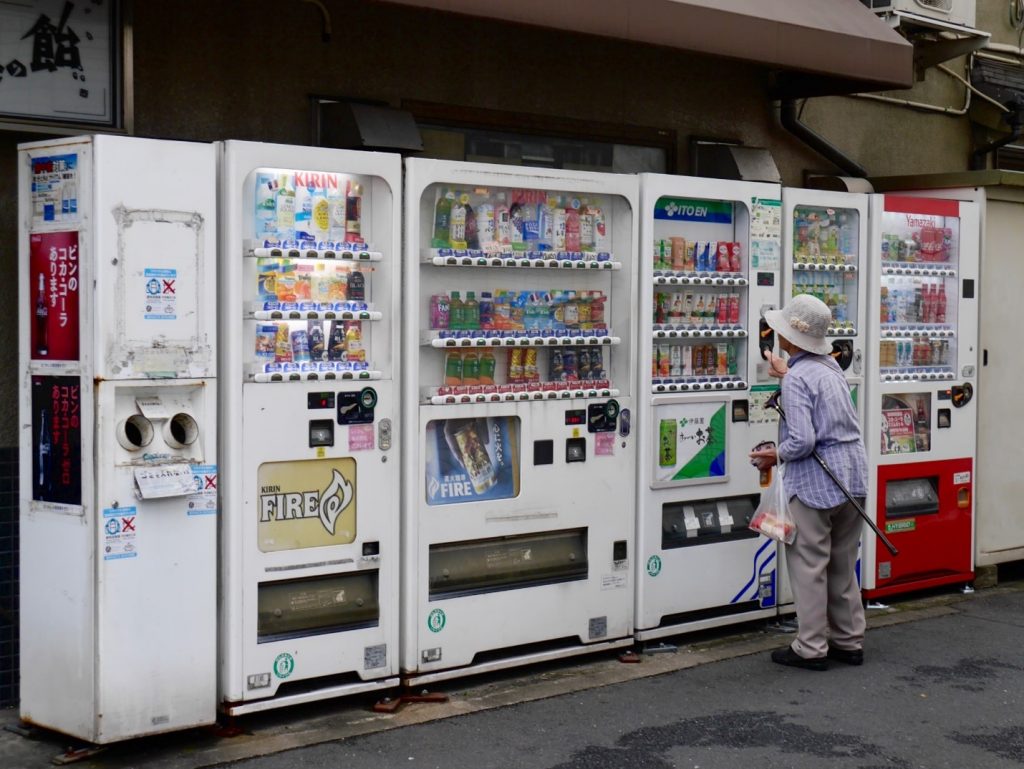
- ARAB NEWS
- 30 Jun 2025

Nader Sammouri
OSAKA: Vending machines or jidōhanbaiki (自動販売機) are a big part of Japanese culture, a sight that daily repeats itself almost everywhere one goes in Japan, with machines sprayed in stations, parks and temples in cities and the countryside.
Japan has the highest density of vending machines in the world, with four million vending machines nationwide, making it 1 vending machine for an estimate of every 30 people, almost all of them flawlessly functional, clean, speedy and well-maintained.
The machines offer an extensive variety of options that are in constant rotation, from cold and hot drinks to cigarettes, ice cream, disposable cameras, bags of rice, instant noodles and even warm chicken nuggets and other pre-made meals.
“Many interesting operations and campaigns also become possible because vending machines are installed all over the country with electronic money built-in. The business strategy of vending machines continues to evolve beyond the imagination of Japanese people,” said Kohei from Osaka.
The convenience of vending machines in Japan is truly superior. In a rushing world, it helps to have an automated pal a few steps away from almost any urban location. What is fascinating is that they are sometimes located at corners of steep roads, balanced by uneven block foundations.
One may wonder, why are there so many vending machines in Japan?
Due to the strict working culture in the country, convenience becomes a priority. Thus, the sprawling of these machines saves time so that people would avoid lingering around when they’re looking to catch a drink or a snack on the go.
It is also an indirect and a passive way to make money for many, as a side business opportunity, in a country that is largely non-confrontational.
Another reason is Japan’s declining birthrate and aging population, which makes labor scarce and overpriced. That pushes for a relative obsession with robots and automation to rely more on machines and less on human labor.
Vending machines can also be a way to distract waiting customers. Chuko Tire Ichiba is a company that sells used tires in Sagamihara, Japan. Its president went on to install 49 vending machines for the sake of his waiting customers so that they have a break while they await their tires to be changed. Some of the vending machines discharge ready-to-eat bowls of Ramen and Udon, both popular noodle-based Japanese cuisines.
Vending machines in Japan are also used as an automated way to handle payments in restaurants. It is very common to find a ticket machine awaiting you at the entrance of an eatery, either inside or outside. Customers choose their preferred meal, pay by cash or rechargeable (IC) cards, and the machine yields a ticket. This allows the staff to focus on cooking rather than handling any payments.
As opposed to the automation that dominates most of Japan, one will find from while to while roadside stalls that sell a few products, like oranges or bento boxes, without any human handling. A container is left next to the products, and the customers are blindly trusted to do the right thing.
As for the Middle East, its vending machines are its human resources. A region with wealth in its youth culture, the need for automated machines to do the job is less. Creating a strong foundation for start-up creation, ideation and business training hubs, and investment opportunities could be a solution to stimulate and orient the youth into a sort of productive action.